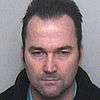Murder of Danielle Jones
The murder of Danielle Jones (16 October 1985 – c. 18 June 2001) was an English murder case where no body was found and the conviction relied upon forensic authorship analysis of text messages sent on the victim's mobile phone. Danielle Sarah Jones,[1] was last seen alive on 18 June 2001.
Danielle Jones | |
|---|---|
 | |
| Born | Danielle Sarah Jones 16 October 1985 East Tilbury, Essex, England |
| Died | c. 18 June 2001 (aged 15) Unknown |
| Height | 1.73 m (5.7 ft) |
| Parent(s) | Anthony and Linda Jones |
Stuart Campbell | |
|---|---|
 | |
| Born | Stuart James Campbell 21 February 1958 Maldon, Essex, England |
| Occupation | Builder |
| Criminal status | Convicted |
| Spouse(s) | Debbie Jones |
| Children | 2 |
| Conviction(s) | Abduction and murder |
| Criminal penalty | 10 years for abduction and life imprisonment (min term 20 years) |
Jones's uncle, Stuart Campbell, a builder, was convicted of abduction and murder on 19 December 2002. Campbell was sentenced to life imprisonment for murder as well as 10 years for abduction.
After the trial, controversy arose when it was revealed Campbell had prior convictions for indecent assault on other girls of similar ages.[2] The use of forensic authorship analysis of text messages in the case provoked research into its use in other cases.[3]
Disappearance and investigation
15-year-old Danielle Jones was last seen near her home in East Tilbury, Essex, on the morning of 18 June 2001, while walking to a bus stop.
Suspicion fell on Campbell almost immediately and he was first arrested on 23 June 2001, five days after Jones went missing.[4] Detectives had delayed his arrest while weighing the possibility of endangering Jones's life, on the presumption she was still alive and being held against her will, against the possibility of Campbell leading the police to her.[5] During police interviews Campbell was described as "uncooperative". In one 20-minute interview with the police, Campbell refused to comment on 50 questions.[6][7]
The investigation included several appeals to the public for information, including a reconstruction on the BBC television programme Crimewatch. During the investigation, over 900 police officers and support staff searched over 1500 locations for Jones's body, as within two months of her disappearance police working on the case were convinced that she was dead.[8][9]
Murder trial
On 17 August 2001 police re-arrested Campbell on suspicion of murder, after finding "significant evidence" which appeared to support their theory that Danielle Jones was now dead.[10]
A police superintendent said to the BBC that Campbell "developed a relationship with Danielle that was certainly inappropriate and probably unlawful." Jones apparently tried to disengage, but Campbell resisted. By 14 November 2001, the Crown Prosecution Service decided that the police had enough evidence to charge Campbell for murder – even though her body had not been found.[5][9]
On 14 October 2002, Campbell went on trial for abduction and murder, having spent 11 months on remand. The Crown's case rested upon several pieces of evidence. Jones had disappeared without contacting her parents and had been seen talking to a man in a blue Ford Transit van resembling Campbell's on the morning of her disappearance. The testing of blood-stained stockings discovered in the loft of Campbell's house found DNA matching both himself and his niece; lip gloss used by Jones was also found in Campbell's home. A diary kept by Campbell revealed an obsession with teenage girls, with testimonies that Campbell had manipulated young girls into posing for topless photographs.
HI STU THANKZ 4 BEIN SO NICE UR THE BEST UNCLE EVER! TELL MUM I'M SO SORRY LUVYA LOADZ DAN XXX
— The text message that Campbell claimed Jones had sent to him. The message was sent in uppercase, however, Danielle habitually sent messages in lowercase.[5]
Mobile Switching Centre records demonstrated that Campbell's alibi of being at a D-I-Y store half an hour away in Rayleigh was false and that Campbell's and Jones's mobile phones had been within the range of a single mobile phone mast at the time that a text message had allegedly been sent by Jones to Campbell. This, along with forensic authorship analysis, indicated that Campbell had written the message, not Jones, implying that Campbell had sent the message to himself using Jones's phone to make it appear that she was still alive.[5][9]
Campbell was found guilty of both charges on 19 December 2002 and sentenced to life imprisonment for murder to run concurrently with a 10-year sentence for abduction. The High Court later ruled that Campbell should serve a minimum of 20 years before being considered for parole, meaning that he is set to remain imprisoned until at least November 2021 and the age of 63.[11]
Aftermath of the trial
After his trial, it was revealed that in 1989, Campbell had received a 12-month suspended sentence for forcibly detaining a 14-year-old girl in his house and taking indecent photographs of her.[11]
The use of text-message evidence in the trial led a group of researchers at the University of Leicester to begin studying text-messaging styles under the hypothesis that forensic research into the authorship analysis of such messages might help in future criminal cases.[12][13][14]
In 2004, Campbell was granted leave to appeal against his conviction on the grounds that evidence of his obsession with Jones, and of his interest in schoolgirls, should have been excluded at his trial and on the further grounds that one of the jurors, the next-door neighbour of a police officer involved in the case, should have been discharged. The appeal was dismissed in 2005 by the Court of Appeal.[15][16]
On 28 July 2005, an inquest by the coroner was held into Danielle Jones's disappearance, returning a verdict of unlawful killing. Police interviews with Campbell in prison reported that Campbell had still refused to tell them where he had disposed of his victim's body.[17][18][19]
In May 2017, Essex and Kent Police forces began searching a garage block in Stifford Clays, Thurrock, after receiving new information, and "did not rule out" looking for a body. It was reported that similar information regarding suspicious activity around the garages had been received at the time Danielle Jones disappeared, but had not been followed up in the initial investigation. A spokesperson for Essex Police said the force was "working to ascertain why these were not searched as part of the original investigation."[20] It was subsequently announced that no discovery had been made.[21]
Other cases
Contrasts between this case and the murder of Hannah Williams have been drawn, citing the disparity in news media coverage of the two as an example of missing white woman syndrome.[22] Jewkes cites the media coverage of the Jones case as an example of the news media's eroticisation of the victim in such cases, pointing to the news media's reports of the sexual relationship between victim and murderer, and the news media's publication of photographs of the victim's stockings.[23]
See also
References
- "High Court setting of minimum terms for mandatory life sentences under the Criminal Justice Act 2003". Her Majesty's Courts Service. 9 December 2005. Archived from the original on 6 June 2011. Retrieved 22 April 2008.
- "'Give us Danielle's body' say parents". BBC News. 19 December 2002. Retrieved 2 February 2009.
- Summers, Chris (18 December 2003). "Mobile phones – the new fingerprints". BBC News. Retrieved 2 February 2009.
- Danielle police question uncle BBC News
- Peter Gould (19 December 2002). "Uncle with a secret obsession". BBC News.
- Jason Bennetto (18 August 2001). "Police arrest Danielle's uncle and hold him for questioning". The Independent. London: Independent News and Media Limited.
- Blanco, Juan Ignacio. "Murderpedia". Retrieved 4 November 2019.
- "Crimewatch appeal for Danielle". BBC News. 11 July 2001.
- Gould, Peter (19 December 2002). "Proving murder without a body". BBC News. Retrieved 28 September 2006.
- "Danielle police question uncle". BBC News. 17 August 2001.
- "Danielle's uncle jailed for murder". BBC News. 19 December 2002. Retrieved 28 September 2006.
- "Text messages could solve crimes". BBC News. 10 August 2006.
- Ian Wishart (11 August 2006). "We will cu in court". Leicester Mercury. p. 21.
- "Texting study to catch criminals". BBC News. 11 August 2006.
- "Danielle murder leave to appeal". BBC News. 23 April 2004.
- "Danielle killer loses appeal bid". BBC News. 21 January 2005.
- "Police 'won't give up' search for body". Western Mail. 29 July 2005.
- "Danielle inquest to be held four years after murder". The Daily Telegraph. London: Telegraph Media Group Limited. 14 July 2005.
- David Sapsted (29 July 2005). "Uncle refuses to reveal where Danielle's body can be found". The Daily Telegraph. London: Telegraph Media Group Limited.
- "Danielle Jones murder: Garage search in missing body murder". BBC News. 15 May 2017. Retrieved 15 May 2017.
- Stephen Jones (17 May 2017). "Danielle Jones' family told police have not found body of murdered schoolgirl". Daily Mirror. Retrieved 22 July 2017.
- Fiona Brookman (2005). Understanding Homicide. Sage Publications. p. 257. ISBN 0-7619-4755-8.
- Yvonne Jewkes (2004). Media and Crime. Sage Publications. pp. 48–49. ISBN 0-7619-4765-5.
Further reading
- "The Danielle Jones inquiry". The Guardian. London: Guardian News and Media Limited. 17 August 2001.
- "The Saturday Interview: Prof Malcolm Coulthard – Killer trapped by text message blunders". Birmingham Post. 2 July 2005. Archived from the original on 13 April 2018 – via HighBeam Research. – an interview with the expert witness who testified at the trial
- Jenkins, C. (31 January 2003). "Stuart Campbell thought technology would stop the police proving that he murdered his niece, Danielle Jones. Instead, it proved his downfall. (Detective's Casebook)". Police Review. Police Review Publishing Co. Ltd: 28–29.
- David Sapsted (19 December 2002). "The killer". The Daily Telegraph. London: Telegraph Media Group Limited.